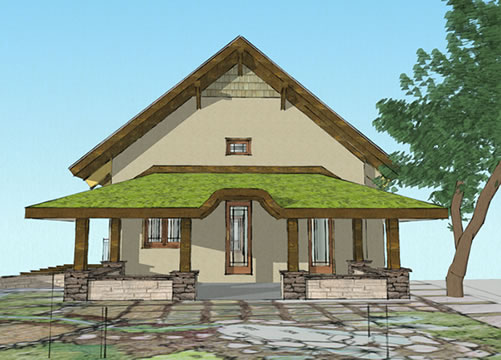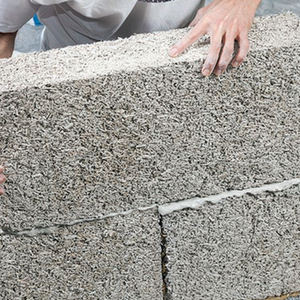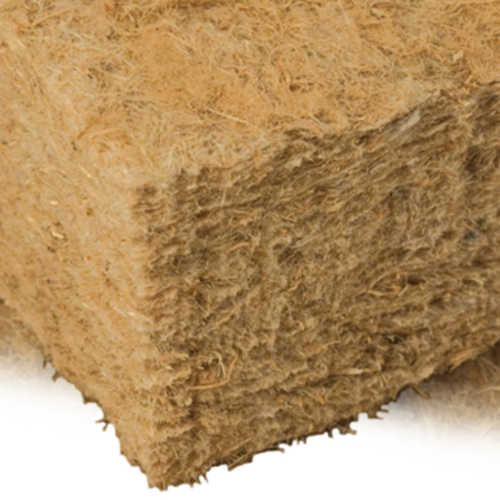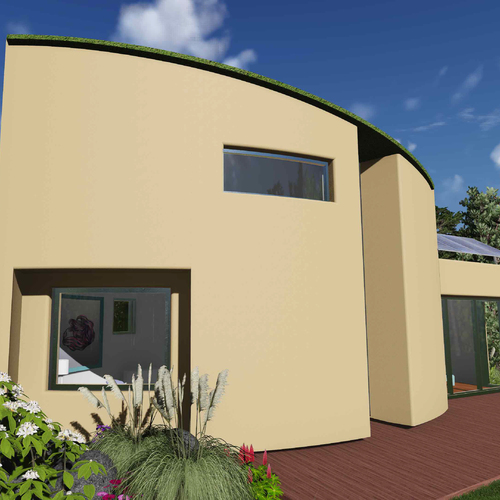Image Credit: Nauhaus Institute
Fabrics and rugs made with industrial hemp are often cited as acceptably green alternatives to floor coverings made from petrochemicals, or to woolen rugs treated heavily with insecticide. But hemp also has found its way into another domestic application.
And it is not the first alternative use that may come to mind.
Nauhaus Institute, a North Carolina-based coalition of designers, engineers, builders, developers, and others devoted to green construction, has been working with hemp as a wall-construction material. Called Tradical Hemcrete, the material is essentially a lime-based binder and industrial hemp chips (derived from the woody, pretty much unsmokable core of the hemp plant) that, when mixed with water, can be sprayed over a substrate on an exterior wall or poured into forms around timber or stick framing to create a thermally resistant but “breathable” barrier.
A wall-material bakeoff
As noted in a recent story in Asheville, North Carolina’s Citizen-Times, Nauhaus (pronounced “now house”) has two homes under construction that will feature Hemcrete walls. Nauhaus says on its website that, overall, hemp met sustainability, performance, cost, and aesthetic criteria better than competing materials.
“On the natural building side, we feel that earthen mixes don’t have adequate thermal performance in our climate while the vulnerability of straw bales to water damage concerns us,” the group’s partners say on the Nauhaus site. “On the high-performance commercial side, we are skeptical of the long-term durability of SIPS walls and feel that double-stick frame systems are too complex and prone to air infiltration weaknesses. These and other problems seem to be solved by what to us is a new material: Tradical Hemcrete.”
Hemcrete also is billed as insect- and fire-resistant. One issue the group couldn’t get around, however, is that, while industrial hemp products can be imported into the U.S., it is illegal to grow hemp here. Tradical Hemcrete is made in the U.K. by a division of Belgian firm Lhoist Group, a specialist in calcined-limestone products, and is distributed in the U.S. by Hemp Technologies, of Asheville.
A green quandary: shipping from the U.K.
The Citizen-Times story points out that shipping costs make Hemcrete considerably more expensive — the approximately 1,900 sq. ft. of Hemcrete required for one of the Nauhaus projects, with 3,100 sq. ft. of interior space and 12-inch-thick exterior walls, costs about $56,250. But Hemcrete walls also require less lumber, which reduces framing costs 30% to 40%, Greg Flavall, a co-founder of Hemp Technologies, told the paper. Another advantage to Hemcrete, says Nauhaus partner Chris Cashman, is that it serves as “your Sheetrock, insulation and Tyvek all rolled into one.”
Building-performance costs in both Nauhaus projects will be significantly lower than conventionally constructed homes of comparable size, although the smaller of the two structures, a 1,450-sq.-ft. four-bedroom that will serve as a Nauhaus prototype and test house, will have 16-inch-thick walls and solar panels on the roof to bring energy usage to net zero.
Not surprisingly, Nauhaus partners advocate legalizing industrial-hemp growing in the U.S. “Our feeling is, what a great crop this would be for North Carolina’s tobacco growers to get into,” Nauhaus partner Tim Callahan told the Citizen-Times. “Bringing this in from England is probably not the greatest idea (economically). If local farmers can benefit from this, it would be great for them and great for the economy.”
Weekly Newsletter
Get building science and energy efficiency advice, plus special offers, in your inbox.
















3 Comments
Tradical Hemcrete
Nice article about what sounds like a promising product. However, by joking that this is the "unsmokable core" you have planted the idea that hemp is smokable withing an article that culminates with a plea for legalization of domestic hemp production. I am not a seasoned marketing rep but it seems like you just shot yourself in the foot. Though I personally appreciate the humor there are a lot people less educated on the subject and prone to hysteria.
Respectfully,
Patrick Doss-Smith, LEED AP
Re : Another Use for Hemp: Home Construction
I think that it is an pretty good article and I considered than hemp is an better option in the use of home construction.
Thanks.
Growing Hemp
Just wondering, how is a crop of hemp grown? I assume much different than the drug/marijuana plants, no need for grow lights, etc. Apparently it was a common crop at the time of our nation's founding, and that George Washington and Thomas Jefferson both raised hemp and Benjamin Franklin owned a mill that made hemp paper.
Log in or create an account to post a comment.
Sign up Log in